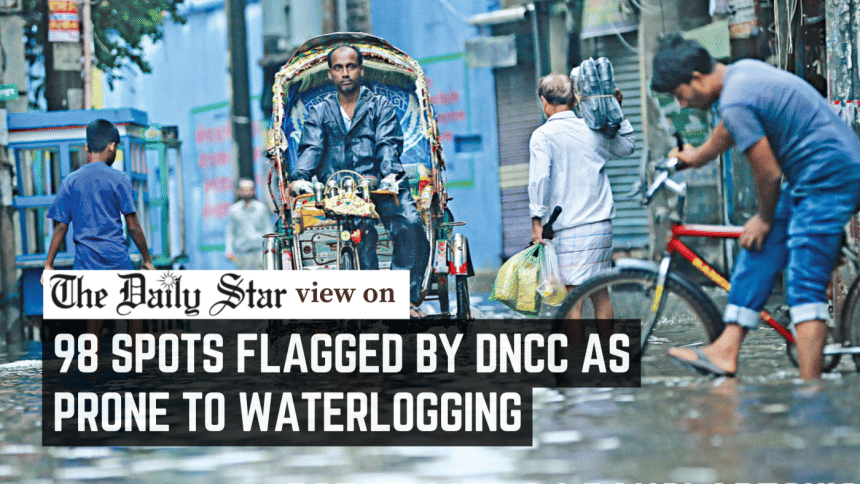Waterlogging has become a regular occurrence in Dhaka during the monsoon season. A recent report revealed that the Dhaka North City Corporation (DNCC) has pinpointed 98 vulnerable areas prone to waterlogging, resulting in submerged residences and streets, extensive traffic congestion, and significant disruptions to daily routines. Despite the DNCC investing more than Tk 650 crore in drainage infrastructure from 2020 to 2024, issues such as ineffective governance, inadequate planning, and non-compliance with environmental regulations have perpetuated waterlogging as an ongoing challenge.
The DNCC is responsible for managing 86km of canals, 300km of primary drains, and 1,200km of secondary drains. However, localities like Kazipara, Shewrapara, Uttarkhan, Dakkhinkhan, and Mirpur experience recurrent flooding annually, indicating a systemic breakdown. While the DNCC has acknowledged the problem and initiated canal clean-up efforts and assessments, these actions have been deemed insufficient and delayed.
The unregulated urban expansion over the years has severely impacted Dhaka’s natural drainage system. In 1995, water bodies constituted 20.57 percent of central Dhaka, whereas today, they only make up 2.9 percent. Additionally, green spaces have decreased from 22 percent to nine percent during the same timeframe. The rampant encroachment has left the city vulnerable to flooding even after minor rainfall events. Many water bodies, drains, and canals are obstructed by plastic waste and solid debris. Despite the DNCC’s attempts to clear the canals, the results have been short-lived. The outdated and insufficient drainage infrastructure has further exacerbated the crisis.
There is a pressing need for decisive action by the interim government to tackle this issue. The outdated 2015 drainage plan should be revised to align with evolving climate patterns, population expansion, and urban growth. Encroachments on canals, water bodies, and flood-prone areas must be halted, and illegal structures impeding drainage should be dismantled. Coordination among the two city corporations (North and South), WASA, and the Department of Environment is crucial to effectively address the waterlogging problem.
Community-based initiatives should be launched to engage citizens in maintaining clean canals. This involves establishing local monitoring groups, promoting proper waste disposal practices, and conducting awareness campaigns. Furthermore, transparency and accountability in all public projects are essential. Citizens deserve to know how the allocated public funds for waterlogging mitigation have been utilized and the outcomes achieved. Emphasis should be placed on developing a sustainable drainage system rather than temporary solutions that offer minimal long-term benefits.

